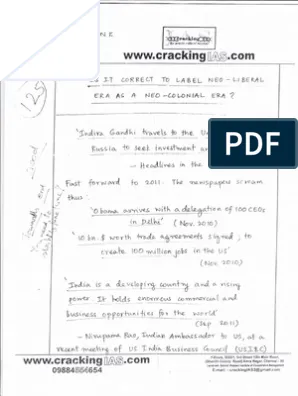- Home
- Prelims
- Mains
- Current Affairs
- Study Materials
- Test Series
Rashtriya Swayamsevak Sangh - 100 Years
- The Rashtriya Swayamsevak Sangh (RSS) is a Hindu nationalist volunteer organisation founded in 1925 in Nagpur by Dr. K.B. Hedgewar in response to perceived threats to Hindu culture and society, particularly during British colonial rule.
- It aims to promote the idea of Hindutva, which emphasises Hindu cultural and national identity.
- Pre-Independence Era:
- The organization played a significant role in social and cultural mobilisation among Hindus. It focused on community service, education, and the promotion of Hindu values.
- Post-Independence:
- After India''s independence in 1947, the RSS faced scrutiny, especially after the assassination of Mahatma Gandhi by Nathuram Godse in 1948. The organisation was banned for a short period but was later reinstated.
- Ideology:
- The central ideology of the RSS, articulated by Vinayak Damodar Savarkar, promotes the idea that India is fundamentally a Hindu nation.
- The RSS emphasises the importance of Indian culture and heritage, aiming to unite people under a common national identity.
- The organization engages in various social service activities, including education, health care, and disaster relief, promoting the idea of "Seva" (service) among its members.
- Contribution to Freedom Struggle:
- RSS did not participate directly in the Indian independence movement, it contributed to the socio-political awakening of Hindus.
- History of Ban of RSS:
- 1948: Banned after Gandhi''s assassination; lifted in 1949 after pledging loyalty to the Constitution.
- 1966: Government employees banned from joining RSS, reiterated in 1970 and 1980.
- 1975-1977: Banned during Indira Gandhi''s Emergency; lifted in 1977.
- 1992: Banned post-Babri Masjid demolition, lifted in 1993 after a commission deemed the ban unjustified.
- Structure and Functioning:
- The RSS operates through a network of shakhas (branches) across India and abroad, focusing on physical, intellectual, and cultural training.
- It has inspired many other organizations, including the Vishva Hindu Parishad (VHP), Bajrang Dal, and Akhil Bharatiya Vidyarthi Parishad (ABVP).
- Political Influence: It is considered the ideological parent of the Bharatiya Janata Party (BJP), which has been a major political force in India since the 1990s.
|
Rules on Government Employees Joining RSS
|
UPSC CSE Prelims 2024 - Question
Consider the following pairs :
|
Party |
Its Leader |
|
1. Bharatiya Jana Sangh |
Dr. Shyama Prasad Mukherjee |
|
2. Socialist Party |
C. Rajagopalachari |
|
3. Congress for Democracy |
Jagjivan Ram |
|
4. Swatantra Party |
Acharya Narendra Dev |
How many of the above are correctly matched?
(a) Only one
(b) Only two
(c) Only three
(d) All four
Answer (b)
- Dr. Shyama Prasad Mukherjee founded Bharatiya Jana Sangh on 21st Oct. 1951 at Delhi and he became its first President. Hence, Pair 1 is correctly matched.
|
The Bharatiya Jana Sangh (BJS) was a right-wing political party in India founded in 1951 by Shyama Prasad Mukherjee. It later evolved into the Bharatiya Janata Party (BJP). Here are concise notes on the Bharatiya Jana Sangh: Formation and Founder
Ideology
Political Journey
Merger and Legacy
|
- C. Rajagopalachari parted ways with the Congress in 1957 after being disillusioned by the path it was taking. He founded the Swatantra Party in 1959, which favoured classical liberal principles and free enterprise. Hence, Pair 2 is incorrectly matched.
- Babu Jagjivan Ram resigned from the Cabinet and the Congress Party on 2 February 1977. He formed his own party, ‘Congress for Democracy’ (CFD) on 5 February 1977. Hence, Pair 3 is correctly matched.
- Acharya Narendra Dev was instrumental in the establishment of the Congress Socialist Party in 1934 as a radical faction working within the Indian National Congress. Hence, Pair 4 is incorrectly matched.
- The Congress Socialist Party under the leadership of Jayaprakash Narayan and Acharya Narendra Dev played a major role in the Quit India Movement (1942).
- Hence Only Two is Correct.
|
Who was Dr Shyama Prasad Mukherjee?
|









 Latest News
Latest News
 General Studies
General Studies